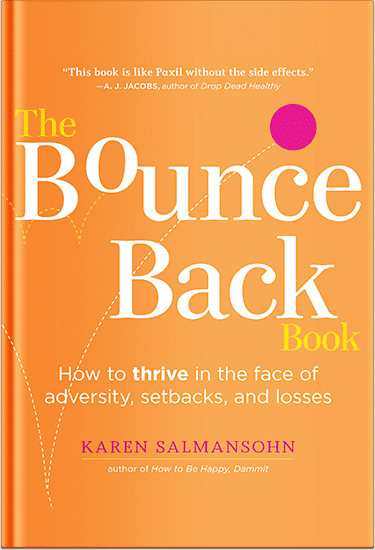 Photorefractive Keratectomy is a laser eye surgery performed to correct a variety of vision problems including myopia (nearsightedness), hyperopia (farsightedness), and astigmatism. This procedure aims to improve or correct the focusing power of the cornea—The clear front surface of the eye.
Photorefractive Keratectomy is a laser eye surgery performed to correct a variety of vision problems including myopia (nearsightedness), hyperopia (farsightedness), and astigmatism. This procedure aims to improve or correct the focusing power of the cornea—The clear front surface of the eye.
The process involves gently removing the outermost layer of the cornea called the epithelium. Upon removal, an excimer laser is used to reshape the corneal tissue that’s exposed. This reshaping is done by the process of removing very small amounts of corneal tissue.
I’m sharing this article because I’m a best-selling wellness author – known for my health-boosting longevity book, Life is Long.
Inside my book I share a range of health tips. In this article I will be focusing on PRK Surgery and if and how it is a laser vision correction alternative to LASIK .
How Does PRK Work?
PRK aims to fix vision problems by precisely reshaping the cornea to alter curvature by the exact margin of the refractive error. The patient’s current vision prescription determines the amount of tissue removed.
All treatments, including PRK astigmatism treatment, rely on the natural healing process of the epithelium. Right after reshaping the cornea, a protective contact lens is placed on the eye. This aids in the natural healing process as the epithelium regenerates and covers the targeted area. Throughout the healing process, the cornea gradually stabilizes and the vision improvement becomes apparent.
If you’re interested in checking your eligibility for treatment, then we recommend getting in touch with a PRK Chicago clinic for a professional opinion. PRK surgery is a reliable alternative to LASIK. Individuals with thinner corneas or irregular corneal shapes are also recommended to go for PRK as LASIK is not an option.
Let’s find out more about the differences between the two.
PRK vs. LASIK: What’s Different?
A lot of people have the question of which one is the better eye surgery. Not all corneas can undergo LASIK, but if yours can, then is PRK better than LASIK?
The answer is yes. It’s generally safer and cheaper to go for PRK than LASIK under most circumstances. Both procedures are laser surgeries but work in slightly different ways.
LASIK
A thin, hinged flap is created on the cornea using a microkeratome or femtosecond laser. This flap is then lifted and an excimer laser is used to reshape the underlying corneal tissue. Similar to PRK, the laser removes microscopic amounts of tissue to alter the cornea’s curvature.
Once the reshaping is done, the flap is repositioned, where it acts as a natural bandage. This flap fits back in place and there’s no need to stitch anything back.
Healing is considerably fast and the process is fairly painless. This convenience is the reason why many prefer LASIK over PRK.
PRK
A specialized laser gently scrapes the outermost layer of the cornea during the PRK procedure. The biggest difference is that no corneal flap is created after the reshaping is done and instead, a contact lens is put in place to promote healing as the epithelium regenerates over time.
This regeneration takes time. Compared to LASIK, full recovery is slower and the procedure is more discomforting initially. On the other hand, the lack of a flap makes the procedure safer (more on the side effects of LASIK’s corneal flaps later).
Which is Cheaper—LASIK or PRK?
PRK is slightly cheaper than LASIK in most cases. The exact cost depends on many factors such as where you are and the specific clinic you choose. Cost should never be the sole determining factor. Usually, PRK can cost anywhere from $1000 to $2000 per eye. LASIK can be slightly more expensive and cost anywhere from $1000 to $3000 per eye.
PRK vs. LASIK: Side Effects & Risks
So, how do you choose which one is better? First of all, in many cases, a professional will be consulted and he or she will tell you which procedure will be most suitable for you. There’s no reason to ignore professional advice.
Still, let’s look into the side effects and risks associated with the two procedures. First of all, LASIK’s corneal flap needs to be discussed as it poses certain risks.
- The corneal flap may become dislodged or shift out of place. This mainly happens if the eye is rubbed or subjected to trauma before it’s healed completely.
- The epithelial cells on the outer surface may grow underneath the flap instead of on top of it. It’s a minor issue that might require minor treatment.
- After LASIK surgeries, and it’s extremely rare, certain complications can occur related to the flap itself. Irregular flap creation, small perforations in the flap, or flaps that are too thin/thick can all require additional procedures to correct.
LASIK further carries the risks of infection, inflammation, changes in vision, and the appearance of halos, glare, and starbursts (mostly temporary). All these are extremely rare.
There are a few risks common to both procedures—Undercorrection, overcorrection, dry eyes, and regression have all been reported by patients of both types of surgeries.
Comparatively, PRK carries smaller risks:
- Delayed visual recovery, discomfort, and sensitivity are the biggest downsides to PRK compared to LASIK. It may take days and sometimes even weeks for vision to stabilize after PRK. The removal of the epithelial layer can also cause discomfort and sensitivity during the healing phase.
- In some cases, PRK can lead to the development of corneal haze or scarring, causing a temporary decrease in visual clarity. These issues are typically managed with medication and resolved over time.
Final Verdict
Both are long-term eye surgeries that mainly differ in the initial steps and the recovery period. The actual process is the same—Reshaping the cornea to correct the refractive error. As such, there’s no difference in results between the two.
Hypothetically, if you were to undergo LASIK in one eye and PRK in another, while both eyes had the exact same amount of refractive error, then upon recovery both eyes will function the same.
Talk with an eye specialist to figure out the best treatment option for you.
Live your healthiest life
Read my health-boosting wellness book, Life is Long
P.S. Before you zip off to your next Internet pit stop, check out these 2 game changers below - that could dramatically upscale your life.
1. Check Out My Book On Enjoying A Well-Lived Life: It’s called "Your To Die For Life: How to Maximize Joy and Minimize Regret Before Your Time Runs Out." Think of it as your life’s manual to cranking up the volume on joy, meaning, and connection. Learn more here.
2. Life Review Therapy - What if you could get a clear picture of where you are versus where you want to be, and find out exactly why you’re not there yet? That’s what Life Review Therapy is all about.. If you’re serious about transforming your life, let’s talk. Learn more HERE.
Think happier. Think calmer.
Think about subscribing for free weekly tools here.
No SPAM, ever! Read the Privacy Policy for more information.
One last step!
Please go to your inbox and click the confirmation link we just emailed you so you can start to get your free weekly NotSalmon Happiness Tools! Plus, you’ll immediately receive a chunklette of Karen’s bestselling Bounce Back Book!


 Photorefractive Keratectomy is a laser eye surgery performed to correct a variety of vision problems including myopia (nearsightedness), hyperopia (farsightedness), and astigmatism. This procedure aims to improve or correct the focusing power of the cornea—The clear front surface of the eye.
Photorefractive Keratectomy is a laser eye surgery performed to correct a variety of vision problems including myopia (nearsightedness), hyperopia (farsightedness), and astigmatism. This procedure aims to improve or correct the focusing power of the cornea—The clear front surface of the eye.